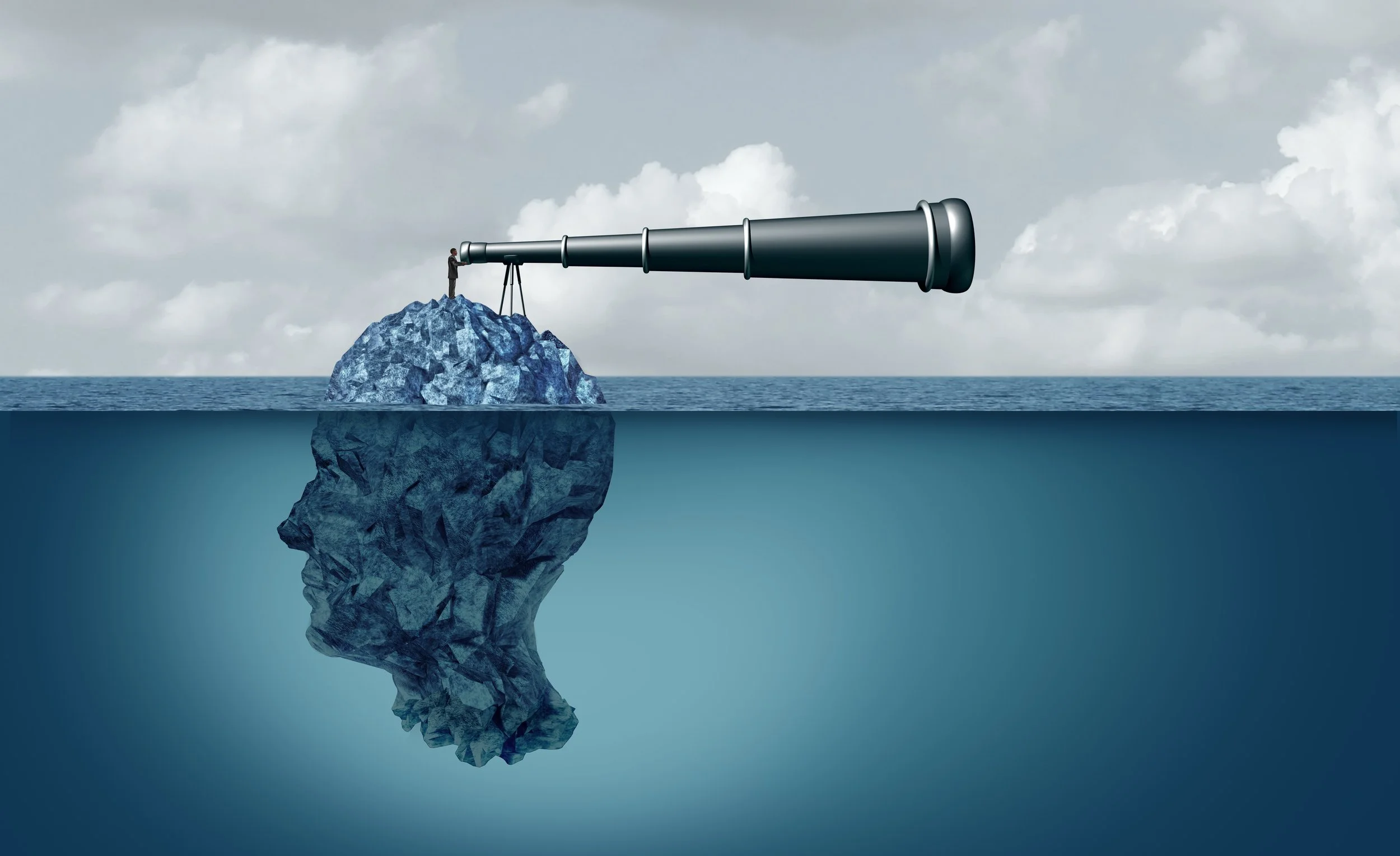The Hidden Forces Within Teams: Decoding the Complexities of Group Dynamics
Executive leadership team in discussion, visualising hidden group dynamics
Group dynamics are the hidden forces that shape who speaks, who stays quiet, and how decisions are really made. Much of this influence operates in the unconscious - mental processes outside awareness that still drive emotion, trust and behaviour. To understand team performance, we need to look beyond visible actions to the subtle, often unspoken patterns that determine how people think, feel and collaborate (Bion, 1961; Kets de Vries, 2025).
In this article, we explore how conscious and unconscious group dynamics interact within teams, and how skilled coaches help leaders decode these forces to build trust, alignment and performance through group dynamics team coaching.
Understanding the Conscious and Unconscious Forces Shaping Your Team:
The Conscious Forces You Can See:
These are the visible, deliberate behaviours that shape everyday collaboration:
Communication: The quality of listening, feedback and clarity of expression.
Decision-making: The way choices are made and commitments agreed.
Conflict resolution: How differences are surfaced, discussed and resolved.
Conscious and Unconscious Forces Shaping Your Team from the individual outwards
The Unconscious Forces You Often Miss
Beneath the surface, teams operate through invisible patterns - assumptions, emotions and group norms that influence how people show up and relate. These forces include assumptions about power, loyalty and belonging; emotional undercurrents such as fear, pride or rivalry; and unspoken “rules” that govern how much truth can safely be shared (Schein, 2010; Edmondson, 1999).
Beliefs and assumptions: Hidden views about power, hierarchy and competence.
Group norms and culture: Unspoken “rules” about risk, authority and accountability.
Emotional dynamics: Feelings such as fear, trust or belonging that quietly guide interaction.
When these forces go unnoticed, teams repeat the same conversations, avoid crucial issues, or misread intent - even when everyone’s working hard.
Teams rarely intend these patterns - they evolve over time as the group unconsciously seeks safety and stability. But under stress, these same dynamics can limit innovation, silence dissent or distort decision-making. Defensive routines and learned behaviours often reinforce these cycles (Argyris, 1991).
Leaders who learn to notice these signals - the shift in tone, the silence after a difficult comment, or the repeated avoidance of a topic - begin to see their team as a living system rather than a collection of individuals. This awareness, this reading the room, is the first step toward reshaping the culture in real time.
Why Group Dynamics Intensify Under Change
During periods of transformation or uncertainty, the invisible dynamics within a team often become magnified. Change amplifies emotion and exposes the unspoken assumptions that normally sit quietly beneath the surface. Individuals fall back on familiar patterns - seeking control, withdrawing, or over-analysing - as the team system unconsciously works to restore balance. This reflects classic change-management dynamics where systems seek homeostasis (Beckhard & Harris, 1987).
For senior leadership teams, this can surface as tension, cautious decision-making or polarised views about the pace of change. The greater the external pressure, the more likely internal relationships mirror that turbulence. Recognising these reactions not as “resistance” but as natural systemic responses allows leaders to respond with curiosity rather than frustration.
When the team can name what’s happening, they create the conditions for trust, collective learning and adaptive performance - precisely what transformation, whether personal or organisational, requires.
Illustration showing how change amplifies team dynamics and emotional responses
The Role of Skilled Coaches in Supporting Team Development:
Team coaching helps surface what’s hidden - turning implicit patterns into explicit learning. Skilled coaches help teams see, name and shift the dynamics shaping their success. The practice integrates both systemic and relational approaches (O’Neill, 2007; Petrie, 2015). This is skilled specialist coaching work..
Creating Awareness:
Coaches help teams develop self-awareness by uncovering unconscious patterns, beliefs, and assumptions that impact team dynamics. This awareness allows teams to challenge unhelpful behaviors and cultivate more productive ways of interacting.
Facilitating Communication and Collaboration:
Coaches facilitate open and honest communication among team members, ensuring that everyone's voice is heard and fostering a climate of trust and respect.
Through structured activities and exercises, coaches encourage collaboration, enabling team members to recognize and leverage each other's strengths, creating synergy within the team.
Navigating Conflict:
Coaches guide teams in navigating conflicts constructively, providing techniques and tools for effective conflict resolution and fostering an environment where disagreements are seen as opportunities for growth and learning.
Cultivating Psychological Safety:
Coaches create a safe space for team members to express their thoughts, ideas, and concerns without fear of judgment or repercussion. By building psychological safety, coaches enhance trust and encourage innovation and risk-taking within the team. This directly supports the research on team learning and psychological safety (Edmondson, 1999). This was the area of my own Masters dissertation on Intercultural Psychological Safety in a complex multinational conglomerate across more than 55 nationalities.
Developing Emotional Intelligence:
Coaches support teams in developing emotional intelligence, enabling members to recognize and manage their emotions effectively. This enhances self-awareness, empathy, and collaboration, leading to improved team dynamics.
Ultimately the above are all examples of helping the teams evolution through Forming, Storming, Norming and Performing.
Systemic team coaching showing interconnected levels from individual to organisation
Seeing the Team as a Living System
Beyond tools and behaviours, advanced team coaching draws on systemic and psychodynamic principles - understanding that every team operates as a living system of relationships, history and emotion (Kets de Vries, 2006; Wheatley, 2006). What happens in one part of the system often echoes elsewhere: a leader’s anxiety may appear as tension in a project group, or an unresolved conflict in the executive team can ripple through the wider organisation.
A systemic team coach helps teams see these connections, noticing how patterns of communication, silence and alliance often repeat over time. Rather than treating problems as individual weaknesses, the coach invites the team to look at the whole picture - what is being expressed on behalf of the system itself.
This approach is grounded in decades of group relations and organisational psychology research (Hollway and Kohut, 2005; The Tavistock Institute, 2016). It acknowledges that teams carry both rational purpose and emotional undercurrents, and that performance depends on managing both. When leaders can interpret what’s happening in the system, they gain a deeper capacity for empathy, decision-making and change leadership.
Conclusion - Turn Hidden Team Forces into Performance
In conclusion: decoding the hidden forces within teams means recognising both the conscious and unconscious aspects of group dynamics. Skilled coaching brings these patterns to light, helping teams communicate openly, navigate conflict, and strengthen trust (Kets de Vries, 2025).
When teams see their invisible dynamics clearly, they unlock higher performance, resilience and genuine collaboration.
Embrace the hidden forces. Engage a skilled coach. Turn awareness into exceptional team performance.
Turn Hidden Team Forces into Performance
👉 Curious how these dynamics show up in your leadership team?
📞 Book a 30-minute consultation →
Explore: 1:1 Coaching | Team Development Coaching
Related reading:
FAQ Group Dynamics Coaching
Q. What are group dynamics?
Group dynamics describe the psychological and behavioural forces that influence how people interact, make decisions, and build trust within teams. Understanding these patterns helps leaders manage collaboration and conflict more effectively.
Q. Why are group dynamics important for senior leadership teams?
Group dynamics shape the quality of dialogue, decision-making, and trust among senior leaders. When unspoken power, emotion, or alliance patterns remain hidden, they can block transformation and innovation.
Q. How can coaching help teams understand their group dynamics?
A skilled team coach helps teams observe and discuss the 'hidden conversation' beneath the surface - how tone, pace, and reactions influence collective behaviour. This awareness enables teams to design better communication habits and rebuild trust.
Q. What are common signs of unhelpful group dynamics?
Common signs include meetings that feel repetitive, decisions that stall, informal sub-groups forming, and emotional undercurrents that go unspoken. These signals suggest patterns worth exploring with a coach
Q. When should a team seek help with group dynamics?
When teams are navigating change, integration, or transformation and notice dips in trust or alignment. Early coaching intervention helps surface the unspoken dynamics before they erode performance.
📚 References
Argyris, C. (1991) Teaching smart people how to learn. Harvard Business Review, 69(3), pp. 99–109.
Beckhard, R. and Harris, R. (1987) Organizational transitions: Managing complex change. Reading, MA: Addison-Wesley.
Bion, W. R. (1961) Experiences in groups and other papers. London: Tavistock Publications.
Edmondson, A. C. (1999) ‘Psychological safety and learning behavior in work teams’, Administrative Science Quarterly, 44(2), pp. 350–383.
Hogan Assessment Systems (2018) Hogan Development Survey (HDS) technical manual. Tulsa, OK: Hogan Assessment Systems.
Hollway, J. and Kohut, H. (eds.) (2005) Psychoanalytic approaches in organizational consultation. London: Karnac Books.
Kets de Vries, M. F. R. (2006) The leader on the couch: A clinical approach to changing people and organizations. San Francisco, CA: Jossey-Bass.
Kets de Vries, M.F.R. (2025) The Path to Individual and Organizational Transformation: Confronting the Elephant in the Room. Cham: Palgrave Macmillan.
O’Neill, M. B. (2007) Executive coaching with backbone and heart: A systems approach to engaging leaders with their challenges. 2nd edn. San Francisco, CA: Jossey-Bass.
Petrie, N. (2015) Coaching across the divide: Using self and systems to solve complex problems. Boulder, CO: Center for Creative Leadership.
Schein, E. H. (2010) Organizational culture and leadership. 4th edn. San Francisco, CA: Jossey-Bass.
The Tavistock Institute (2016) Group relations and organisational learning: Selected papers. London: Tavistock Institute of Human Relations.
Wheatley, M. J. (2006) Leadership and the new science: Discovering order in a chaotic world. 3rd edn. San Francisco, CA: Berrett-Koehler.
📖 Need some clarity? Read the FAQ
📚 My Book Reading list on the themes of change
🎥 Watch the Change Video listings
















